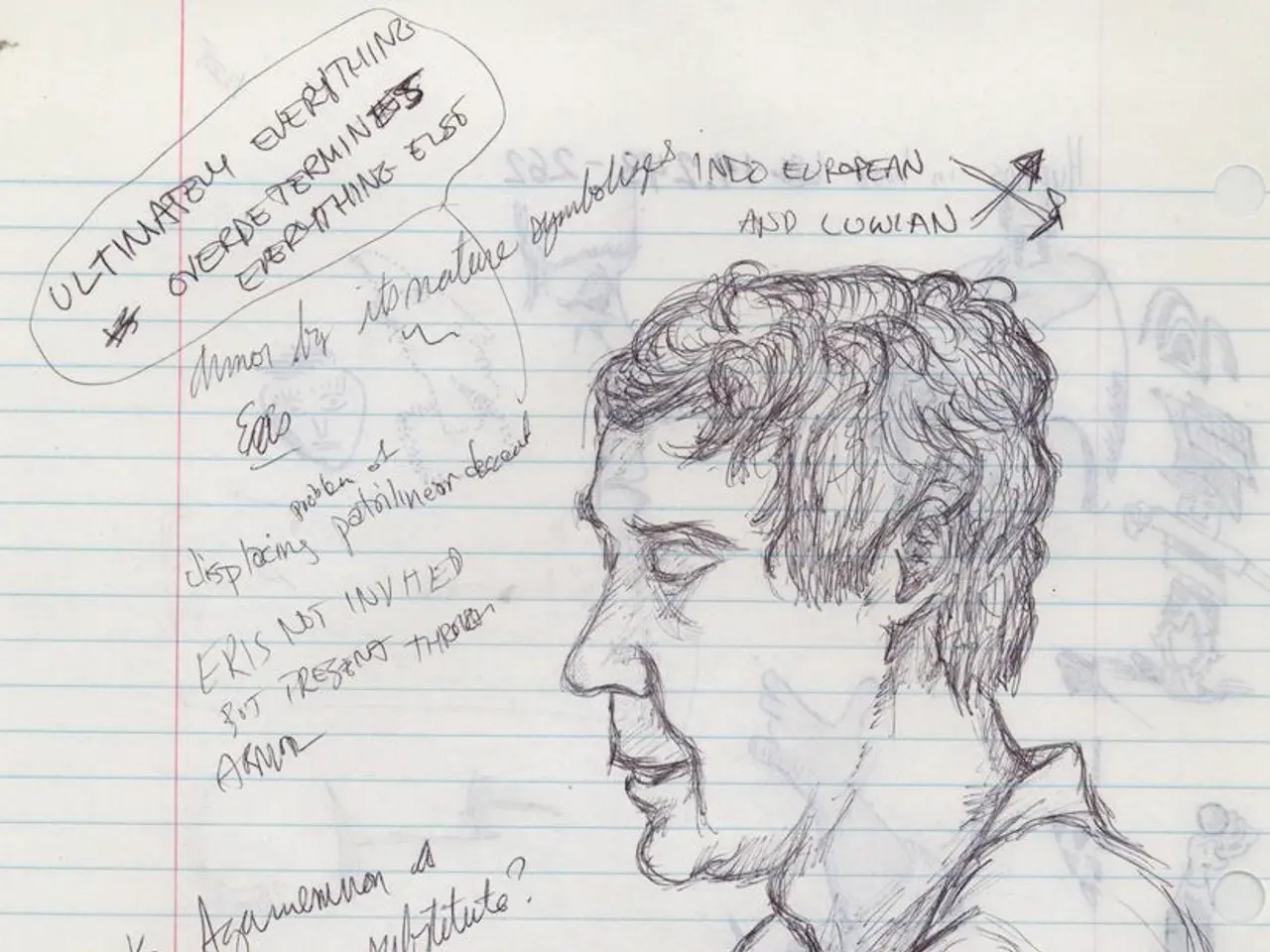Sara Walker and our writer delve into the Origin of Life, discussing the Assembly Theory
In the realm of science, a groundbreaking theoretical and empirical approach known as the Assembly Theory Framework is shedding new light on the origins of life and the complexity of chemical structures. This innovative framework, developed by Leroy Cronin and Sara Walker, is revolutionizing our understanding of life's persistence and the struggle for existence.
The key to life's persistence lies in creating closed loops where different components reinforce each other's existence. A remarkable example of this self-reinforcing cycle can be seen in the large molybdenum ring. This structure serves as a template for smaller components, creating a self-reinforcing cycle that once established, can maintain and replicate itself.
This principle is not limited to biology but is observed in everything from basic chemical reactions to complex organisms. In organic chemistry, a magic number of about 15 steps seems to separate molecules that can arise randomly from those produced by living systems. The Assembly Theory Framework highlights this abrupt transition in the origin of life, where the possibility space collapses onto self-reinforcing structures.
The Assembly Theory Framework provides a method to distinguish between randomly occurring structures and those requiring an evolutionary process. Highly complex objects with large assembly indices are extremely unlikely to form by chance alone. Instead, such complexity implies selection and incremental construction, typical of biological or evolutionary processes.
In practice, the Assembly Theory uses molecular assembly indices (MA) measured through techniques like mass spectrometry or nuclear magnetic resonance to identify molecules that are too complex to arise randomly. By doing so, it offers a quantitative method to detect life or evolutionary signatures in chemistry and biology, providing a novel life-detection tool based on complexity and assembly steps rather than conventional biosignatures.
The Assembly Theory Framework is applicable beyond biology, extending to areas such as language. In the context of language, the vast space of possible configurations of the 26 English letters is reduced due to the recurrence of certain structures, which gives rise to meaning. This framework suggests that the struggle for existence isn't just between existing things, but also between what exists and what never gets the chance to exist.
In summary, the Assembly Theory Framework:
- Defines complexity by quantifying minimal recursive assembly steps from basic building blocks (e.g., chemical bonds).
- Measures an assembly index to distinguish simple molecules likely formed randomly from complex ones requiring evolutionary construction.
- Provides a way to set boundaries on when a structure’s complexity mandates biological or evolutionary processes, thus helping study origins of life and evolutionary pathways in chemistry and biology.
This groundbreaking framework is making significant strides in our understanding of the complex web of life and chemistry, offering new insights into the origins of life and the struggle for existence in the vast universe.
- The Assembly Theory Framework, applicable to areas beyond biology, extends to health-and-wellness, suggesting that the struggle for existence isn't just between existing things like cells and organisms, but also between what exists and what never gets the chance to exist, like certain unhealthy lifestyle choices that are often attributed to genetic factors.
- In the realm of health-and-wellness, understanding the assembly process of molecules in nutritious foods can provide insights into the complexity and self-reinforcing cycles that create beneficial compounds and reinforce healthy choices.
- As this framework moves into fitness-and-exercise, it can help reveal the incremental construction and assembly processes required for muscle development, highlighting the importance of consistent effort and discipline.
- This groundbreaking framework also has potential in education-and-self-development by offering new perspectives on the assembly and selection of knowledge, reflecting how learning complex skills and concepts relies on an evolutionary process with assembly indices that separate easy-to-learn from complex, challenging ideas. Technology plays a crucial role in this arena, as it provides tools and resources to measure the assembly indices and further our understanding of these processes.




